Ireland’s 9 Most Spectacular Natural Wonders (With Pics!)
While Ireland boasts plenty of castles, museums, and pubs hosting live music, one of the primary reasons to visit is its striking natural scenery. The Emerald Isle is filled with magnificent landscapes with everything from sparkling lochs, cascading waterfalls, and idyllic beaches to heather-covered hills and mountains.

What are the most beautiful natural wonders in Ireland?
Ireland boasts numerous unique and breathtaking natural features. While visiting Ireland, be sure to check out some of these natural wonders:
- Sally Gap, County Wicklow
- Cliffs of Moher, County Clare
- Slieve League Cliffs, County Donegal
- The Coral Strand, County Galway
- Dingle Peninsula, County Kerry
- The Lakes, Waterfalls, and Mountains of Killarney, County Kerry
- Croagh Patrick
- Giant’s Causeway
- The Dark Hedges
When planning your trip, be sure to include at least some of the country’s most spectacular natural wonders.
Sally Gap, County Wicklow

Sally Gap lies deep within the Wicklow Mountains, a wild place famous for its beauty thanks to being featured in multiple films and television shows, including the History Channel’s “Vikings” series, which used Lough Tay (also known as Guinness Lake) as the main filming site, the home of Kattegat village.
Many scenes were also shot in the area for 2007’s “P.S. I Love You.”
A scenic drive from the village of Roundwood to the Lough Tay Viewing Point brings a breathtaking panoramic view of the mountains and lakes in the area, but you’ll also find several walks for a more close-up look. The trek between Lough Tay and Lough Dan boasts exceptional views and the chance to spot wildlife, including deer.
Cliffs of Moher, County Clare
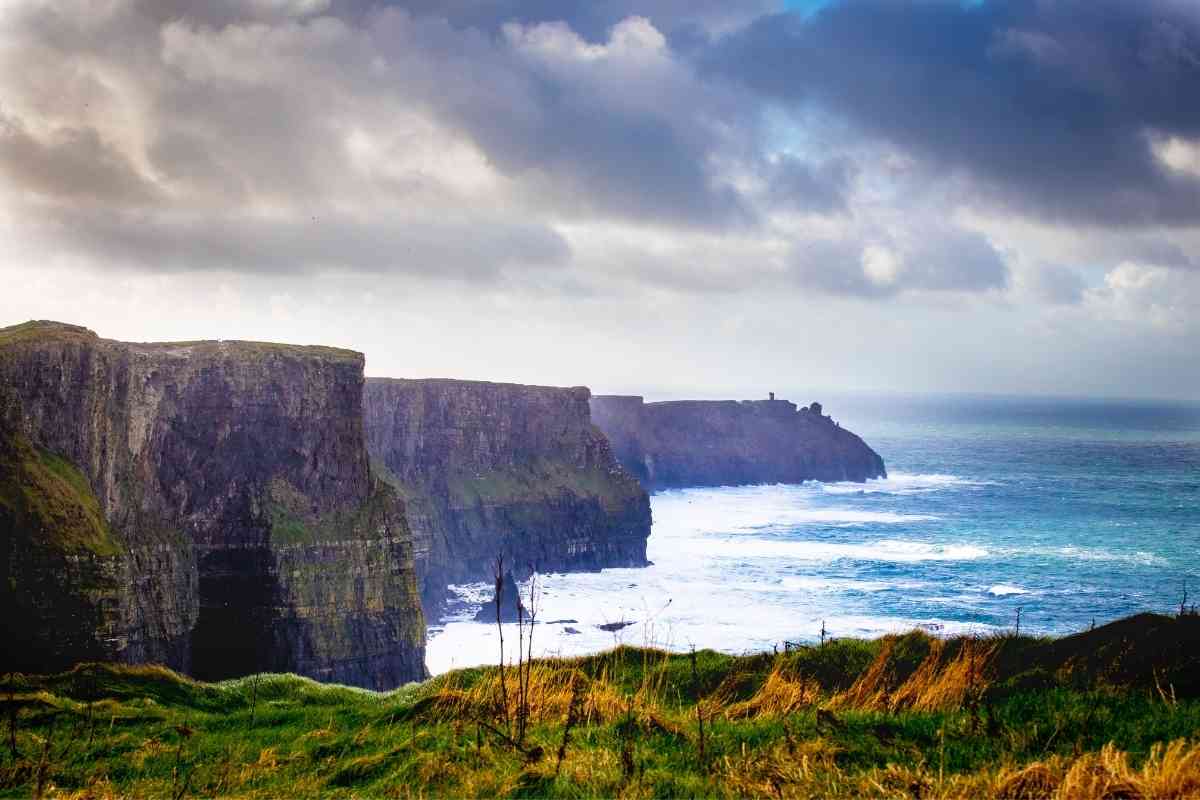
One of the most popular natural attractions in Ireland, the Cliffs of Moher rise more than 700 feet above the Atlantic, stretching along the coast for five miles.
The remarkable crags have also been used in films, doubling as the Cliffs of Insanity in “The Princess Bride” as well as being featured in “Harry Potter and the Half-Blood Prince.” On a clear day from here, you’ll be able to marvel at the Aran Islands, the Twelve Pins Mountain Range, and Galway Bay. If you’re here just before dusk, you’ll be able to take in the breathtaking beauty of a sunset set, with brilliant colors splashed across the sea.
Watch for a wide variety of marine life and land animals, including seals, porpoises, dolphins, minke whales, basking sharks, foxes, badgers, Irish hares, and wild goats.
For a more enjoyable experience, avoid the hours between 11 a.m. and 4 p.m. when crowds are at their peak, especially during the busy tourist season.
Slieve League Cliffs, County Donegal

Some of the highest cliffs in Europe, some say the Slieve League Cliffs are even more impressive than the famous Cliffs of Moher.
Situated along Donegal’s southwest coast, at the highest point, there is nearly a 2,000-foot drop that separates the edge from the Atlantic. On a clear day, you’ll be able to look out at the Sligo Mountains and the Bulben Mountains in Leitrim.
For the full experience, leave your car in the parking area and walk the view miles to the cliffs. As you do, you’ll enjoy fantastic views along the way, too, including the ocean, mountains, and Donegal Bay.
If you want to learn more about the cliffs, visit the Slieve League Cliffs Cultural Centre. It also offers free parking, a café, and crafts for sale.
The Coral Strand, County Galway

Located in the mountainous Connemara region, one of Europe’s most unspoiled destinations, the Coral Strand is a beach that sits at the edge of Mannin Bay near Ballyconneely. It’s made up of fine coral sands derived from coral-like formations made of lime that leach out of seaweed, harden, and break off, making it appear as if it’s been stolen from the Caribbean. The pristine water is clean, clear, and has a remarkable brilliant turquoise hue, ideal for a refreshingly cool dip during the warmer months.
Snorkeling and kayaking are popular here as well.
This entire area is one of Mother Nature’s most impressive works with its vast wilderness areas including everything from postcard-perfect beaches and mountains in the north and west to bogs and lakes in the south.
Connemara National Park, a top spot for hiking, and popular Kylemore Abbey can be found here too.
Dingle Peninsula, County Kerry
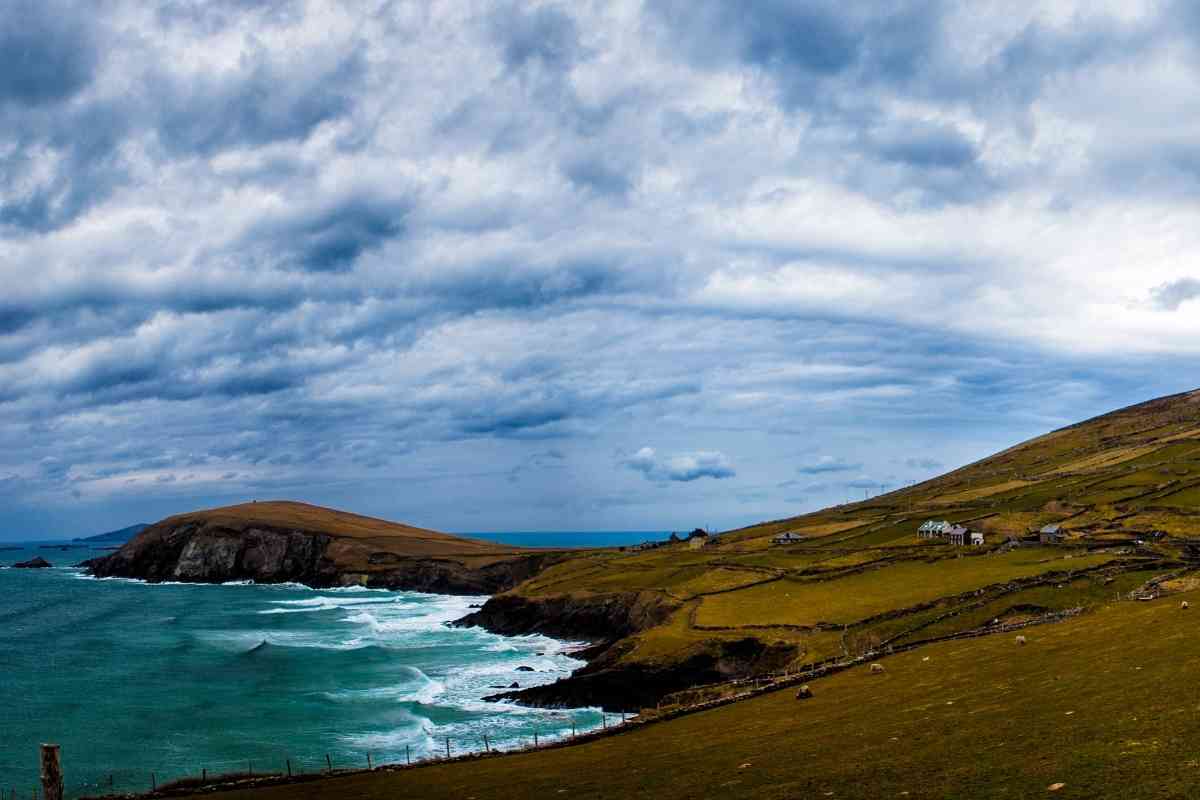
The northernmost of County Kerry’s major peninsulas and Europe’s westernmost point, the Dingle Peninsula, is what many envision when thinking of Ireland. The sea dominates here, with soaring mountains and lush emerald hills dipping down to cliffs that touch coves with golden beaches. The Slieve Mish range and Mount Brandon form its spine in the backdrop, resulting in an unforgettable scene.
The beauty of the peninsula is best experienced with a drive on Slea Head Loop, often named among the world’s most stunning. The 25-mile route is a bit heart-pounding, with the narrow roads clinging to the cliffs with the sea on the other side.
There are areas where you can walk down to the sand as well as a high concentration of ringforts, beehive huts, and other ancient ruins, not to mention the countless photo-ops along the way, so you’ll want to take your time.
The Lakes, Waterfalls, and Mountains of Killarney, County Kerry
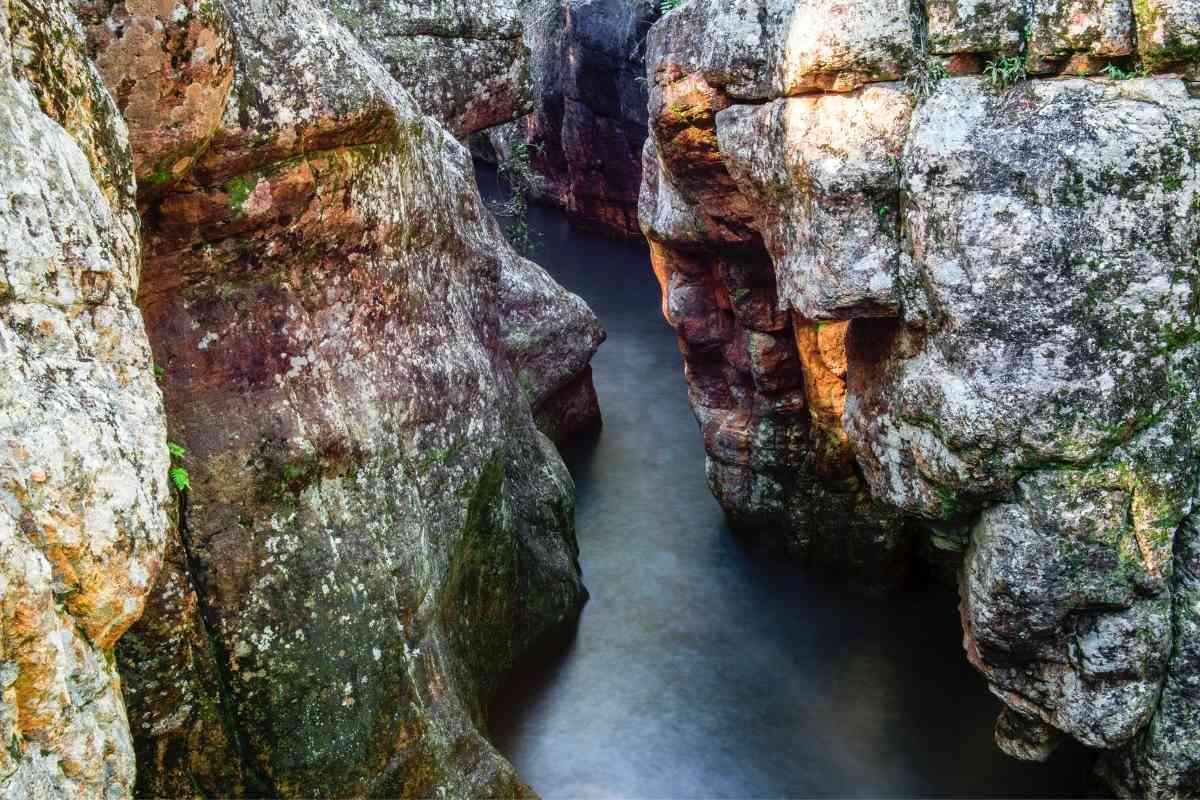
Killarney National Park and the surrounding area are filled with awe-inspiring natural wonders. It’s home to one of Ireland’s most beautiful waterfalls, the 60-foot-high Torc Waterfall, which plunges from the Torc Mountains into the Devil’s Punch Bowl, a roaring river.
There are many other cascades along with the famous lakes that cover nearly a quarter of the national park. It’s also home to the tallest mountain range in Ireland, McGillycuddy’s Reeks, providing views that draw photographers and artists from across the globe.
The park also provides refuge to native red deer who have inhabited the region since the last ice age.
Croagh Patrick
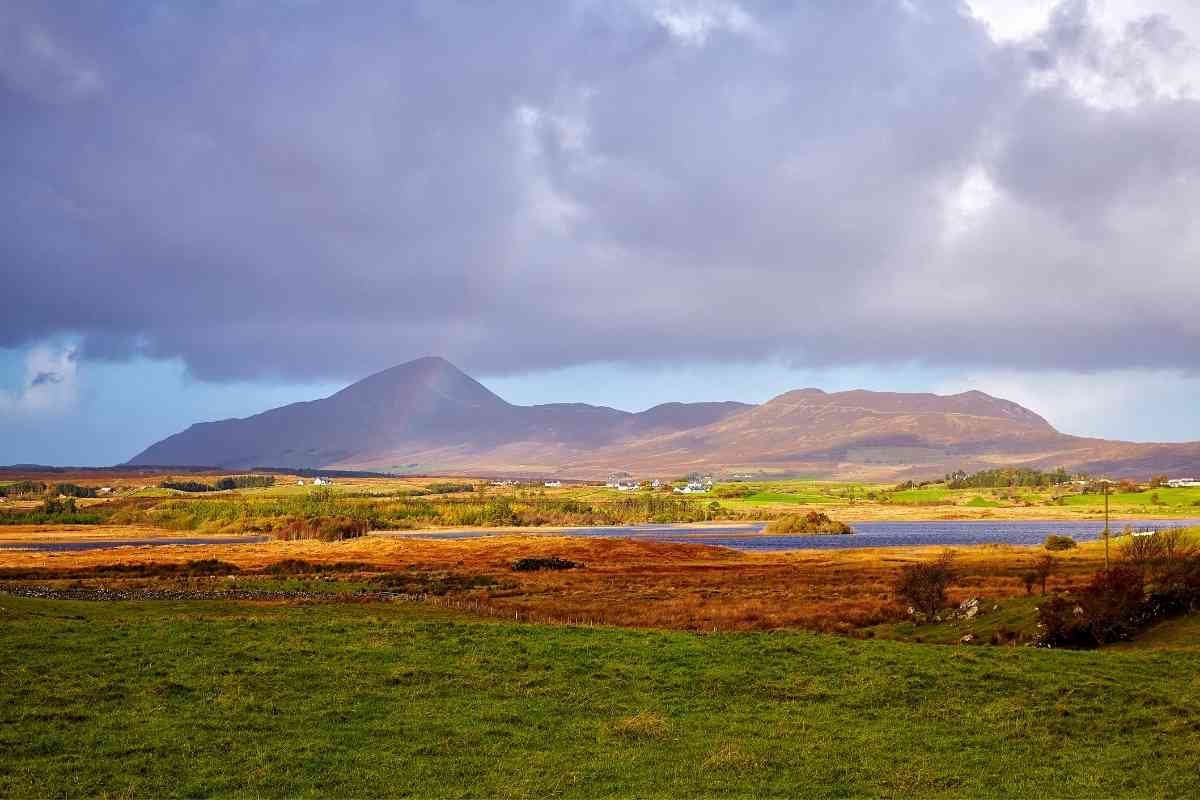
Croagh Patrick, a conical-shaped mountain towering more than 2,500 feet above Clew Bay and the lush landscapes of County Mayo, stands out from a distance, making it popular for photographs.
But it can also be climbed, providing jaw-dropping views from the top on a clear day. Ireland’s holiest mountain, it was named after Saint Patrick, the country’s patron saint.
A pilgrimage is made here every year on Reek Sunday, with many ascending the mountain in bare feet as a penance for their sins. There’s a chapel here, too, where a mass takes place and confessions are heard.
St. Patrick himself is said to have prayed and fasted here at the summit during the 5th century for 40 days.
Giant’s Causeway
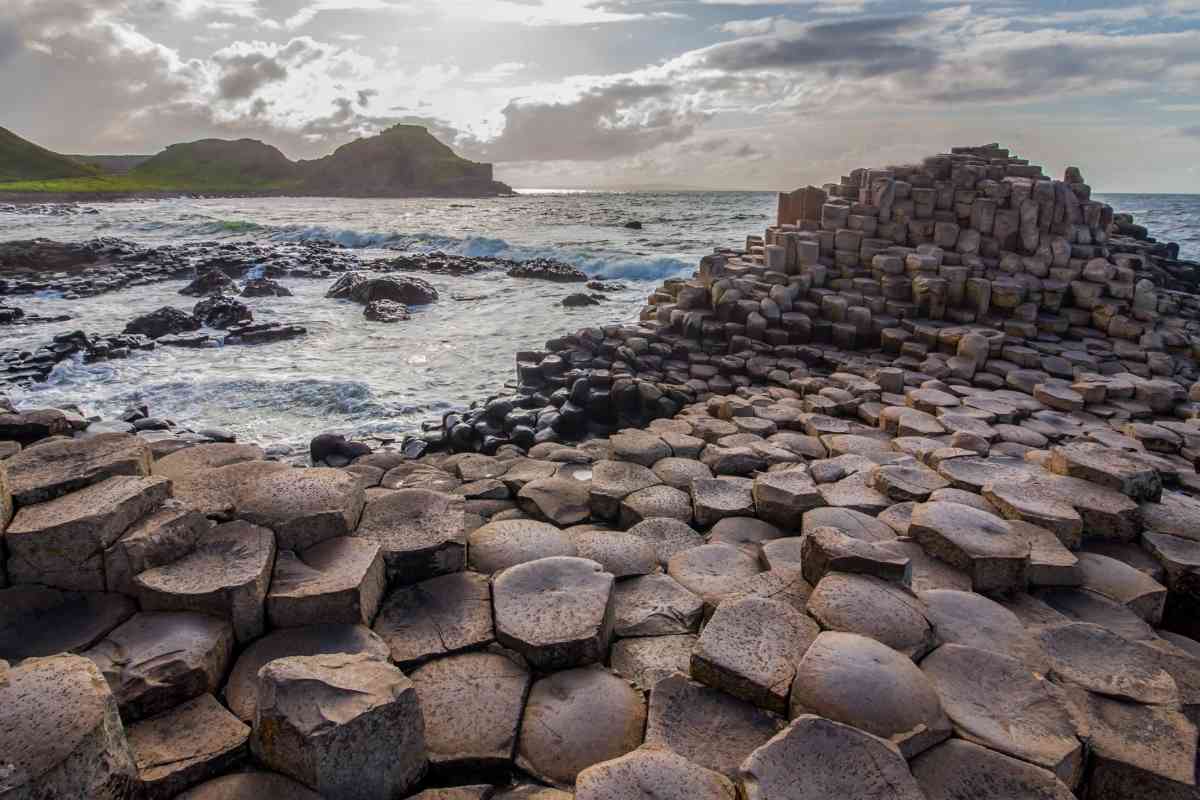
It’s worth crossing the invisible border to Northern Ireland to take in the natural wonders on the UK side, with Giant’s Causeway the absolute must-see. It sits along the Causeway Coast, made up of around 40,000 basalt columns.
Created by a volcanic eruption some 60 million years ago, it’s inspired numerous artists, stirred scientific debate, and sparked many legends and myths.
Legend says that the Causeway was carved by a giant, Fin McCool, who left his home behind to battle his enemy Benandonner across the sea in Scotland.
He was enraged, grabbing chunks of the coast and throwing them into the sea toward his foe, where the rocks formed a path for him to follow. There are other fascinating formations here that testify to the myth, including The Organ, The Camel, the Giant’s Boot, and The Wishing Chair.
The Dark Hedges

Not far from the Causeway Coast and Giant’s Causeway, the Dark Hedges are a remarkable avenue of ancient beech trees
One of the most photographed places on the island, the unique and beautiful stretch was featured in the hit series “Game of Thrones.” They were planted in the 18th-century by the Stuart family who did so to impress visitors upon their approach to the entrance of their Georgian mansion, Gracehill House.
If you want to capture a photo, you’ll need to arrive before 9 a.m. with the tour busses following soon after.
